Is Plasmaide the Newest Norwegian Secret? Professor Alison Heather Explains
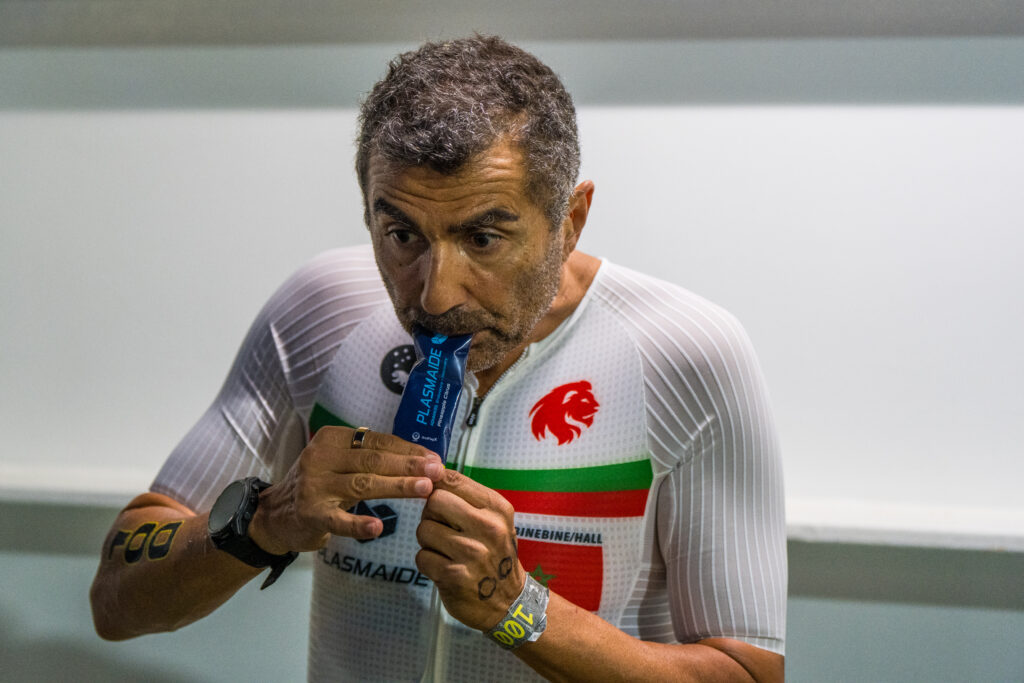
Dr. Elkhalil Binebine grabs a Plasmaide gel before starting the Norseman Xtreme Triathlon. Photo: Kevin Mackinnon
The top pros and elite age groupers are always on the cutting edge of sport science, and none more so than the Norwegians. Sport science is famously at the heart of their program and we’ve all seen the treadmill testing, lactate strips, oxygen monitors, and temperature sensors. (OK, the latter we are glad not to have actually seen since that goes where the sun don’t shine.) All that data has translated into click-bait titles like “300g of carbohydrate an hour” and the proliferation of the “Norwegian Method.” But there is one thing that hasn’t really caught the limelight yet: Plasmaide.
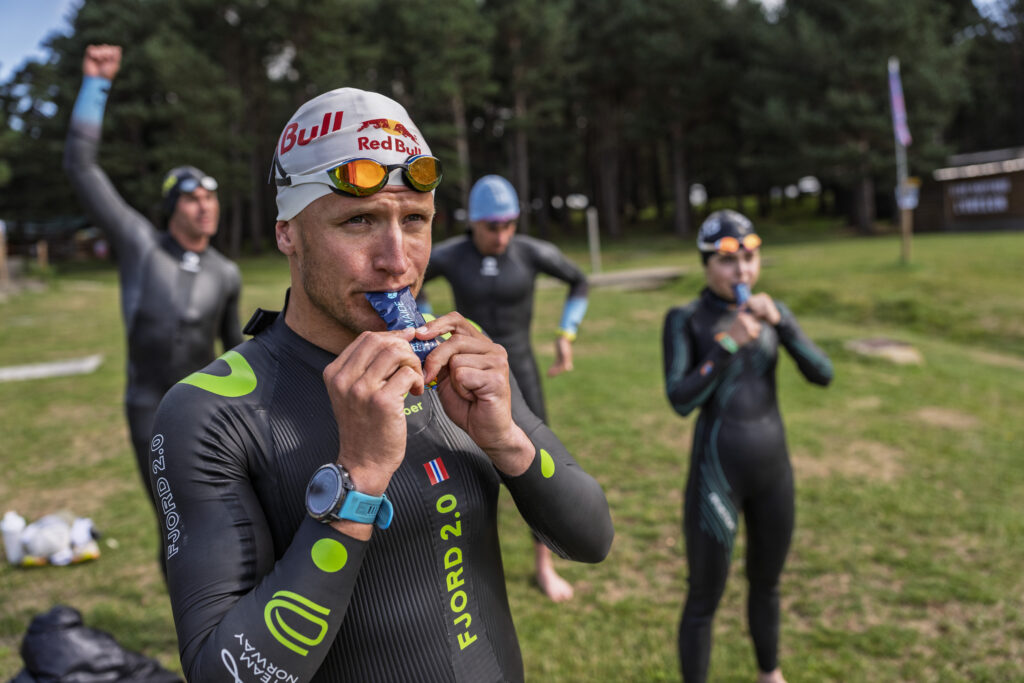
Photo: Plasmaide
Kristian Blummenfelt takes it before he races and praises the lab data; Gustav Iden says he felt the effects the first time he took it and uses it before key workouts; and, if you look at their recent social posts, you’ll spot the blue gel-looking sachets of the product.
But what got the Norwegians so excited that Blummenfelt became a financial backer of the company and Santara Tech became a partner? Pine bark.
What is Plasmaide?
When I started researching this article, the people who had heard of Plasmaide but never used it all said the same thing: “I just know it’s not a gel.” And they are right, it’s not a gel. Although it comes in a gel-looking sachet, it’s a liquid adaptogen containing pine bark extract. An adaptogen, according to the Plasmaide website, “modulates the body’s natural stress response system and other physiological processes.” In this case, the pine bark extract stimulates the production of nitric oxide, which ultimately allows for more oxygen to get to your muscles.
If you’re like me, the second I heard “nitric oxide” I remembered the beetroot juice craze of 2012-2015. But, as lead Plasmaid scientist and Professor of Physiology Alison Heather (University of Otago, University of Cambridge) explains, there’s a difference and we have to go right down to a cellular level to explain it.
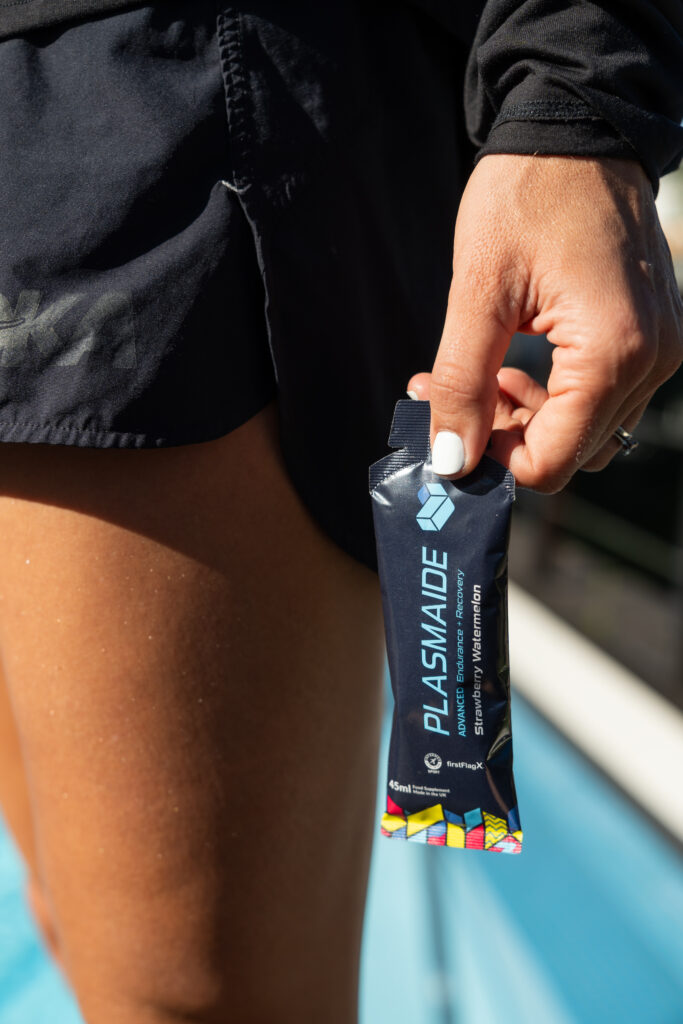
Photo: Plasmaide
Class is in Session: Plasmaide 101 with Professor Heather
While all adaptogens are supplements, not all supplements are adaptogens.
Both Plasmaide and beetroot juice work to stimulate nitric oxide in the body, but beetroot juice (or even leafy greens), bring in nitrates which are then converted into nitric oxide through a chemical process. The pine bark extract in Plasmaide, on the other hand, stimulates the body’s own system to produce nitric oxide.
“So [beetroot juice] is not really an adaptogen in that you don’t change the expression of any genes–and I think that’s where we can draw the distinction,” Professor Heather, who is an expert in hormones and their impact on cardiovascular disease, says. ”If you take in enough beetroot juice, you accumulate your stores of nitrates…but if you’re an elite athlete and you are already eating a lot of healthy meals, your nitrate stores are normally pretty full. Your body is constantly replenishing them because you are out exercising and your body is so used to grabbing that from your diet and storing it that the extra benefit you get from taking beetroot juice is variable from athlete to athlete.”
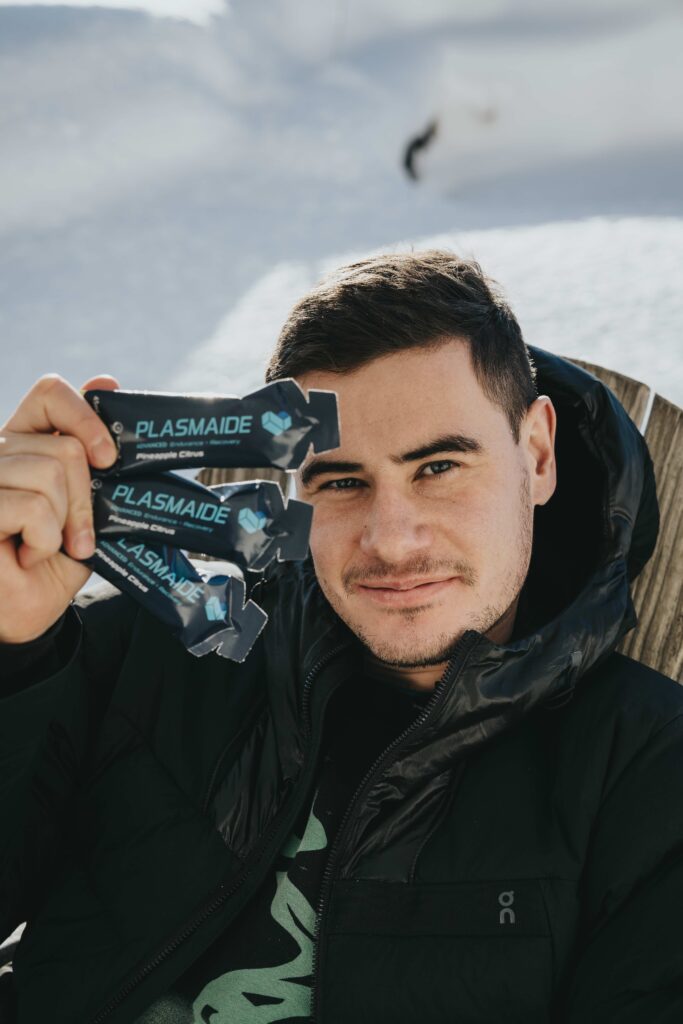
Gustav Iden. Photo: Plasmaide
“Now, something that’s adaptogenic will change the expression of something in your cells,” she continues. “So when you take an adaptogen like Plasmaide, it actually triggers the cells in your body. The cells we are talking about are the endothelial cells that line the blood vessels. Their whole role in life is to regulate how wide the blood vessel is at any time. When we exercise, we want that to widen so we can get more blood to our skeletal muscles. In this endothelial cell, there’s this enzyme called endothelial nitric oxide synthesize (eNOS) and ‘synthesize’ means it makes nitric oxide–and what Plasmaide does is it increases the expression of this.”
“In our body, there are three gases that we are interested in,” says Professor Heather. “Oxygen, so we want to get oxygen to the skeleton muscles so that they can be active. Carbon dioxide, which we want to get rid of as quickly as possible. And the other gas that’s important is nitric oxide because it’s the gas that regulates how much oxygen can get to the muscle and how much carbon dioxide can get away from the muscle.”
To sum up, Plasmaide doesn’t bring in nitrates, it triggers the body’s system to produce nitric oxide so you can get more oxygen to your muscles (push harder, go faster) and get rid of more carbon dioxide (and lactate acid).
Acute Performance and Long Term Recovery in One
According to Professor Heather, unlike most sports supplements, Plasmaide works to boost performance immediately, but also promotes long term recovery.
“ One of the things that we build up in our training just by being endurance athlete is oxidative stress, like an accumulative oxidative stress and inflammation,” Heather explains. “Plasmaide also increases the other proteins and enzymes that are involved in antioxidant and anti-inflammatory [processes]. So long term, it has the benefit also of protecting you against some oxidative stress that builds up with your training and inflammation that builds up with your training.”
“If you take Plasmaide during your recovery from a race or maybe you’ve just done a huge block of training, then it’s not a performance benefit, now it’s the recovery benefit,” Professor Heather adds.
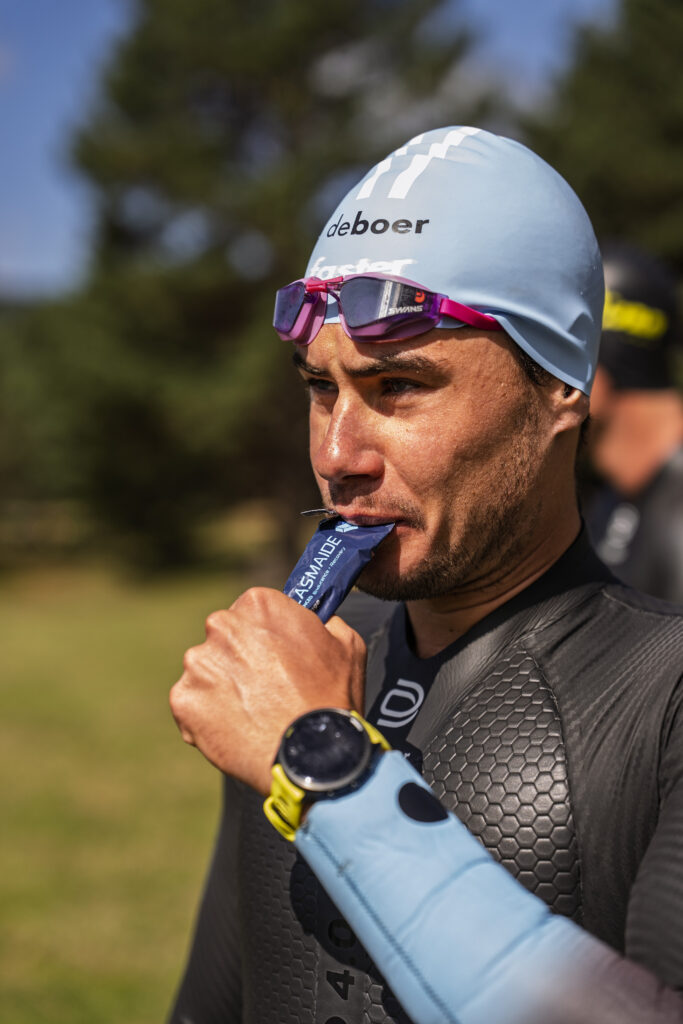
Photo: Plasmaide
How do you use Plasmaide?
For performance benefits, their website recommends taking one sachet 30-60 minutes before or after exercise. To target recovery, they suggest one sachet in the morning and/or at night. Each sachet contains 260 mg of pine bark extract, enough for, according to company founder Steve Allende, a four to five hour window of continuous nitric oxide production.
They have guides on their website for stage races, ultra endurance events and general training and are currently testing various protocols–no doubt with their list of sponsored professional athletes that includes footballers, racing drivers, speed skaters, cyclists, and, along with Blummenfelt and Iden, triathletes Emma Pallant-Browne, Jack Moody, Laura Jane Dennis, Josh Ferris and Chris Beckmans.
Heather, currently tapering for Ironman Copenhagen (her 15th full-distance triathlon), shared how she takes Plasmaide:
“ I always use it for my big sessions in the lead up to the race,” she says. “Then, in taper week, I use it three days out every day, twice on the day before and then once before the race.”
Plasmaide comes in three flavours and, as of now, only in a box of 14 sachets for USD$49. Soon they will be releasing a six pack, which Heather says will be a great amount for a race weekend.
Doing the Research
Heather admits, as a scientist she was “really skeptical.” An accomplished triathlete herself, she met one of the original founders of Plasmaide at her local triathlon club in Australia and offered to run some tests in her lab.
”I worked at the time on heart disease and in my lab I cultured these endothelial cells,” she says. “I threw some of the ingredients of Plasmaide onto the petri dish and I looked for nitric oxide production–and it was there.”
She then tested Plasmaide in the field, using some willing members of the triathlon club (which included Craig Alexander) and saw an increase in nitric oxide in their blood samples. Heather then joined the Plasmaide team as head of their science advisory board and not only brought scientific rigor and expertise to the company, but also FirstFlagX. Her speciality in hormones led her to co-found InstituGen in 2020 which developed and now manufactures testing kits (FirstFlagX) for the detection of steroid hormones for anti-doping purposes. Plasmaide is not only InformedSport certified, but also FirstFlagX cleared.
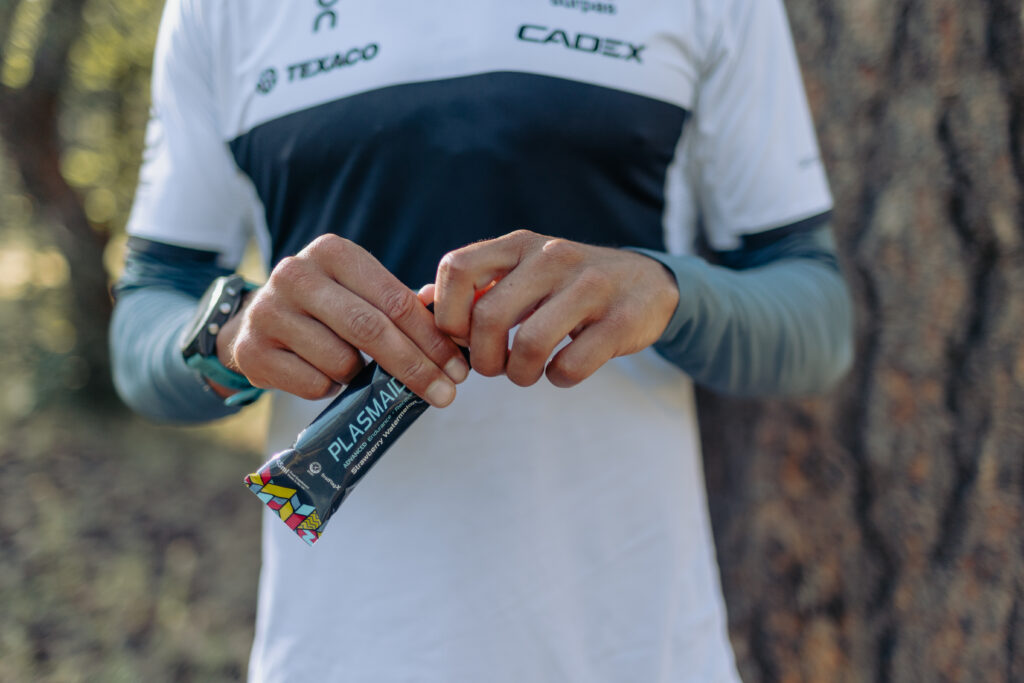
Photo: Plasmaide
She admits she never expected to be involved with a company like Plasmaide.
“ Honestly I’m loving it because I am a triathlete” Heather says. “I’ve been a triathlete for many years. Before that, I was an ultra endurance runner doing a hundred mile runs. For once I get to do the science of sport and I’m really enjoying that. It’s not every day you get to put a NNOXX [nitric oxide and muscle oxygenation monitor] thing around Kristain Blummenfelt’s leg and say, go for a run, let me monitor you. I’m having conversations with people I would never have had conversations with Matt Hauser, Beth Potter, Santara Tech Olav Aleksander, I mean, he’s the guru of sports science and we’ve had quite a few conversations.”
“My whole career has been spent on trying to help unhealthy people, people with cardiovascular disease, people with diabetes, and now all of a sudden I’m able to have conversations with healthy people trying to get them to be the top performance that they can possibly get out of their bodies–making the healthy, more healthy, it’s quite a cool experience,” she adds.
The Next Big Thing?
Even if the science and data are there, only time will tell if Plasmaide will populate or go the way of beetroot juice. But, unlike so many things the Norwegians do that, while they work for them, are simply out of reach and common sense for most people, Plasmaide is accessible, simple and just might be part of the Norwegian Method that any athlete can leverage.
Tags:
Gustav IdenKristian BlummenfeltNutritionPlasmaideSantara TechContinue the discussion at forum.slowtwitch.com
2 more replies




Why does my mind go to, “Hi, I’m Earl Gibbons. Ever eat a pine tree? Many parts are eatable.”
Interesting article, and reported results. I’m by no means medically educated, so I wonder if the results from these world class athletes extrapolate to us not-so-world-class athletes. I’m starting to “feel my age” more than say five years ago, and I wonder if this would help me train. I’m sure it’s not the “magic bullet”, but any help would be accepted by me.
This might work for Migraines
Winning?
https://a.co/d/bz4dgab
Exactly.
Although you would have to take 7 of those pills to equal one of their gels for the equivalent pine cone dosage.
Doesn’t one sachet contain 260mg and one pill 300mg?
Is it 300mg per pill or 33mg?
I’m interested in this, but sometimes I do wonder what exactly we are getting that’s also along for the ride in these highly processed pills.
A little silica never killed anyone…I think.
Heh, ya the things that get mentioned there are what they just to list, always wonder what other trace metals and industrialal components are coming along. Totally understand our bodies can take a lot of junk, but there’s so many habitually taking all kinds of stuff every day for years.
Here’s the natural way (original commercial I was referencing):
Would you need to adjust the timing? There’s no clear information about whether the pills are slow or fast-acting.
I thought this was proven to be rubbish a while back?
I tried modex for a while. Same thing in liquid form. I didn’t notice anything but it sure tasted like crap